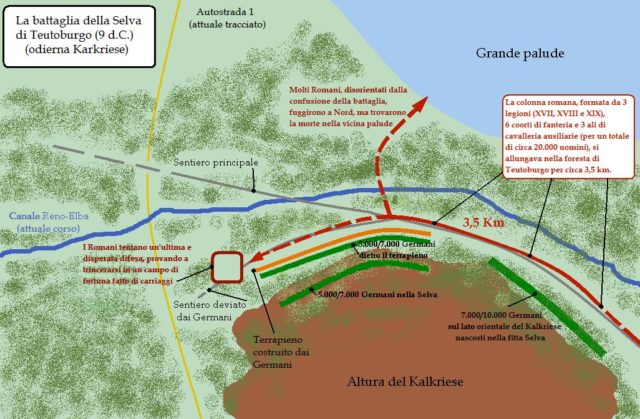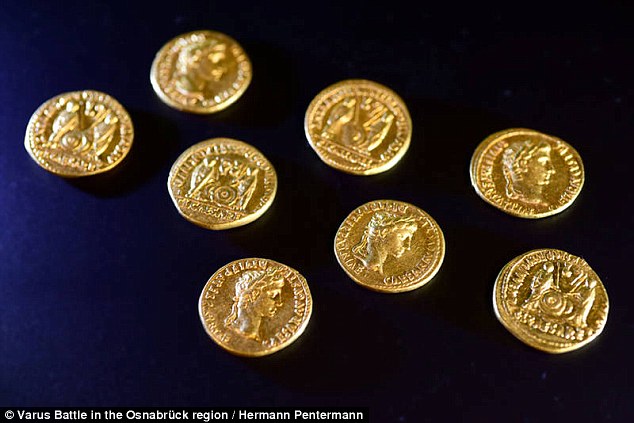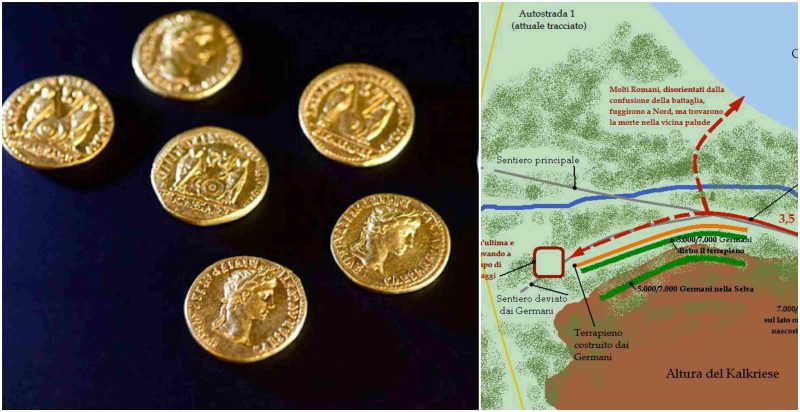A seemingly small discovery has a large impact for historical researchers. The size of the find, a mere eight gold coins, is deceiving; according to experts, this is actually an incredibly rare discovery.
The discovery was made at an archaeological excavation site in Germany, and it could confirm that the site was where the legendary Battle of Teutoburg Forest was fought.
The area where the site is located is now called Kalkriese, and it lies in the district of Osnabrück, Lower Saxony, Germany. Researchers note that the eight gold coins expands the number of total coins found at the site by more than double the previous amount.

The coins weren’t the only artifacts found: pieces of military equipment, belonging to the Romans, as well as bronze coins, were also uncovered at the site. These finds are made all the more incredible given the timeframe in which they were made. As reported by Forbes, the researchers, who are from the University of Osnabrück and Kalkriese, are aware of their “extraordinary” luck in the mere six weeks of digging so far completed during this season.
All of the coins have been preserved remarkably well, although all of them have significant signs of use. The coins, which are called aurei, were all discovered lying within a few meters of each other. This indicates, archaeologists say, that a coin purse was likely dropped on the ground in the course of the fighting or the coins could have been dropped when the owner was intentionally hiding the coin purse for safekeeping.

Source: Varus Battle in Osnabruck region Hermann Pentermann
The coins are clearly Roman. They feature images of Emperor Augustus on one side, and the imperial princes Gaius and Lucius Caesar on the other. The princes, who were both designated successors of Augustus, are each carrying a lance, shield, and a curved religious staff called a “lituss.” The two men stand mirroring each other, and according to researchers, this imagery had both military and religious allusions.
These coins were minted between 2 and 5 BC, a time before the Battle of Teutoburg Forest was fought. Archaeologists speculate that the coins once belonged to an officer or higher-ranking Roman soldier. They certainly did not belong to a lower ranking person.
Even in the past, these coins were valuable. One aureus — the singular of aurei — from the reign of Emperor Augustus would have been enough to feed a family living in Rome for an entire month. So, a small purse of these coins, such as the one that the eight recovered coins fell out of, could have provided financial security for its owner for upwards of a year.
So, what happened during the Battle of Teutoburg Forest? Here’s what we know: Firstly, it was fought in the year 9 AD. It wasn’t really a battle, but a slaughter. Led by a man called Arminius, German tribes ambushed three Roman legions, which were under the leadership of General Varus. The Germans wanted to remain independent of the Romans and their rule. They succeeded.
The tribes massacred their enemy, and roughly 18,000 men were killed during the fighting. So far, there aren’t many more details known about this conflict.
The discovery of the coins aids in the effort to understand what exactly happened during and after the battle. Archaeologists say that new questions have arisen with this find, and they are aware of how much more research is needed at the site of the battlefield before they can see the whole picture.
No matter how apparently small, with each new discovery, researchers gain another piece of the historical puzzle and are able to understand what really happened “little by little.”
